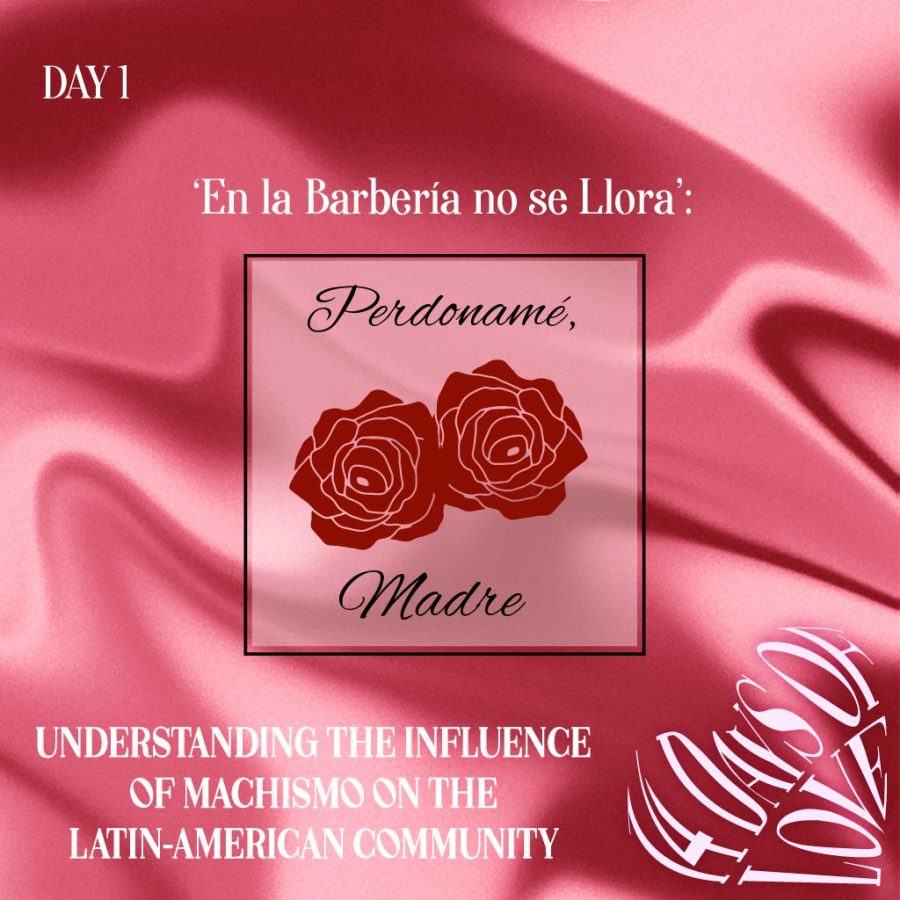14 Days of Love Day 1: ‘En la Barbería no se Llora’: Understanding the Influence of Machismo on the Latin-American Community
February 1, 2023
- En La Barbería no se Llora (No Crying Allowed in the Barbershop). Pépon Osorio. 1994 C.E. Mixed-media Installation.
Art has countless forms: paintings, sculptures, performances, photography, music, drawings, installations among many more; every piece of artwork plays an imperative role as a vessel for expression, thought and societal criticism.
For Puerto Rican artist Pépon Osorio, large-scale installations and artworks hone in on street-life, cultural battles and rites of passage for Puerto Ricans and Latin Americans living in the United States. In the Advanced Placement Art History curriculum, piece number 236 serves as a commentary on the male Latin American culture, centered on toxic masculinity and machismo through the barbershop experience, and questions aspects of the male persona, such as identity, masculinity, culture and the male emotional experience of the 1990s.
On the forefront of the installation, a massive mural reading, “Perdóname, Madre” (Mother, Forgive Me) accompanied by a tattoo-style painting of a rose with bullets underneath it, contrasts the male connection to the mother and the pull toward gang violence at the time. The installation included photos of famous Latino male figures on pink walls, red velvet salon chairs with televisions on the headrests playing videos of circumcision, men playing and men crying. The salon chairs, hosts to silkscreen prints of a nude male figure with a TV ‘face’ on top, symbolize the vulnerable, exposed state that a man may feel while crying.
A place where one would typically go to hear the latest “chisme,” or gossip, the barbershop setting includes a sign that reads “no gossip,” representing the barbershop as a place where a boy becomes a “man,” and learns to listen selectively to their surroundings.
The piece served as a reconstruction of the male perception of emotion, and aimed to create a space as tribute to the less-discussed, sensitive topics within the Latino male community of the time, such as AIDS, toxic masculinity and machismo.
Described as “a strong or aggressive masculine pride,” the word “machismo” symbolizes a lesser-known side of Latino culture: one that places a harmful emphasis on toxic masculinity and emotional insecurity. From a young age, many boys grow up around sayings such as, “men don’t cry,” “be a man” or “just get over it.” Phrases like these make long-term, detrimental contributions to a man’s mental health, and dismiss the idea of vulnerability and emotional sensitivity. Breaking this barrier between the present expectation and the potential to improve in the future is imperative in order to normalize and embrace male mental health awareness alongside breaking the stigma surrounding emotional expectations for men.
Pieces such as those of Osorio are vital tools to use when questioning the realities of societal expectations directed toward men— especially in the Latin-American community. The artist creates a space for the viewer to contemplate their perspective on emotion, and forces society to acknowledge the impacts of harmful stereotypes and expectations.








